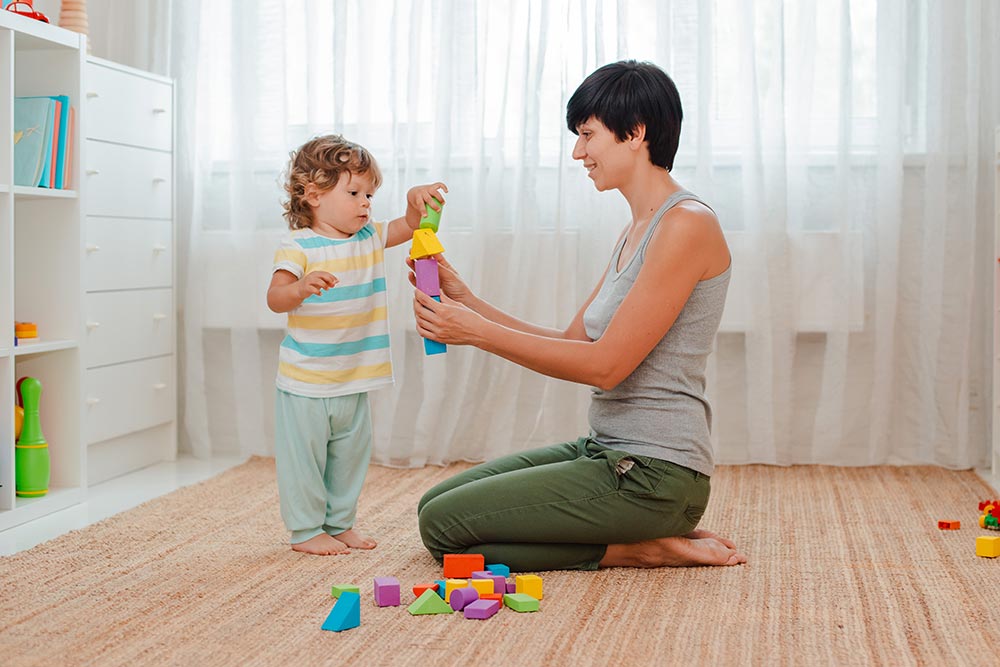Simplified DIR Floortime For Parents
DIR Floortime is a play based therapy for children.
This therapy technique was developed by Dr. Stanley Greenspan as a way to connect with the child while using their interests and passions to develop engagement skills, symbolic thinking, increase logical thinking, and improve interaction.
Simplified DIR Floortime for Parents:
Observe, Listen and Join
This is an evidence-based strategy and Dr. Greenspan encouraged parents to learn this technique because the benefits have been well documented.
Studies found when this technique is used by a clinician meeting children where they are, they are more likely to pick up language skills, express needs, and desires, and connect with their “Floortime partner.”
The steps outlined below is a simplified version of the therapy that parents can easily use to help their kids develop new social skills.
This is a 13 part series. Each post in the series will explain an evidence-based strategy used by professionals for managing behavior with children on the autism spectrum. Each part of this series will contain a table of contents so you can easily navigate to the different strategies.
Table of Contents
- Introduction
- Build a Relationship
- Individualize Motivation
- Observe, Listen, then Join
- Optimize Language
- The Premack Principal
- Basic Redirect
- Breaks
- Picture Rehearsal
- Add Structure at Home
- Teach Independence with Prompting
- Transactional Supports
- Add Structure to the Learning Environment
Observe, Listen, Join

The secret to successfully implementing DIR floortime practices is to first observe your child, listen to your child, and then join in, allowing them to lead.
The Purpose of Observation
There are two purposes for observing your child before joining in with them:
- It helps you understand the different ways your child interacts with others. You’ll see patterns in their individual communicative style which is helpful when communicating with your child too.
- It helps you figure out why positive and negative behaviors occur. When you take the time to observe – you’ll notice patterns in the things that happen before and after both positive and negative behaviors – it will help you develop a strategy that helps your child.
Observe
Stand back and watch – As you’re watching your child, make note of what they gravitate towards most in different settings.
Does their level of functioning change in different settings?
How do they react when faced with conflict?
What are their triggers?
What kind of observations will you make?
All children are unique but there are a few things to watch out for. Consider the following ideas:
How does your child communicate when they want a toy/object?
Do they grab the desired item? Throw a tantrum? Point? Use their own personalized sounds and gestures?
How does your child play and interact with other children?
Make note of any inappropriate social responses. Do they attempt to join with other children, or play near them, or away from them? Are their social attempts reciprocated or misunderstood?
Listen
As you’re observing your child’s behaviors and interactions with others also listen carefully to them and to the sounds around them.
As you’re watching and listening, take notes.
Note the ways your child communicates as it will help you assess their areas of strength and weakness. It’s not only about verbal communication. Any act that conveys an intended meaning is communication.
At the same time, note the things happening around them. What is their reaction to another child talking to them? What about background noise?
This will help you come up with new ideas and supports to build on your child’s current abilities.
Join
Finally, join in and play with your child. This playtime is child-led, you are joining them on their level.
At first, sit down on the floor in close proximity to your child and engage in parallel play. In other words, mirror what your child is doing. Then wait for them to take the lead.
Once you’re playing with your child on their terms you can begin modeling different social skills based on the observations you initially made.
This is a great time to encourage learning because your child will feel completely at ease engaging in an activity they chose, with no demands being placed on them.
Taking the time to participate in DIR floortime with your child will also be helpful when using strategy 4.
Continue to: Strategy 4: Optimize your language

